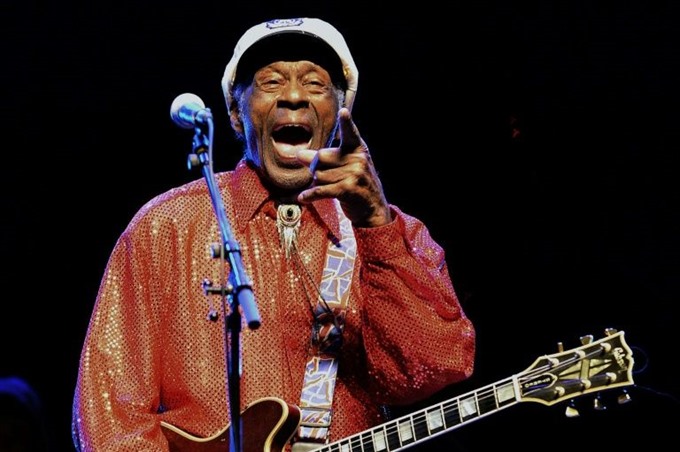 Life & Style
Life & Style

Chuck Berry defined rock ’n’ roll as he gave voice to feel-good 1950s baby-boomer culture. For his swan song, he is reliving that same youthful spirit – and tidying up some loose ends.
 |
| Late rock ’n’ roll legend Chuck Berry, shown here in Uruguay in 2013, projects a youthful spirit on his final album, a posthumous work that is being released Friday. — AFP/VNA Photo |
NEW YORK — Chuck Berry defined rock ’n’ roll as he gave voice to feel-good 1950s baby-boomer culture. For his swan song, he is reliving that same youthful spirit – and tidying up some loose ends.
The rock pioneer died in March just as he was planning an unlikely comeback; in October, for his 90th birthday, Berry had announced he was releasing a new album.
Entitled simply Chuck, the album comes out Friday and marks the first studio recordings by Berry since 1979, with the 10 songs fine-tuned for release since his death.
Returning after three decades in which musical tastes have shifted in manifold ways, Berry stays true to his classic sound – tightly structured tunes rooted in the blues, with a touch of country and the electrifying energy that he called rock ’n’ roll.
On Chuck, Berry signs off as forever young. His world at age 90 was the same one that embraced him in the 1950s – a lifestyle of driving fast cars, partying mischievously and checking out women.
The album kicks off with quintessential Berry, his verses alternating with frolicking yet brassy-toned guitar riffs, on Wonderful Woman.
In the song, Berry remains transfixed – who knows for how many years – by a woman with "big beautiful eyes" and "long, brown wavy hair" who showed up at his concert – in the second row, he recalls.
On the album’s first single, Big Boys, Berry remembers trying to befriend cool older schoolmates, with his enthusiastic guitar complemented by one of rock’s premier axe-men, Tom Morello of Rage Against the Machine.
A woman for Johnny B. Goode
Berry recorded the album around St. Louis, where he lived his whole life, with his son and grandson and other artists who accompanied him for two decades in gigs at the Blueberry Hill club.
Berry dedicated Chuck to his wife of 68 years, Themetta Suggs. But he also appeared to want to close some of the musical stories he started.
Berry revisits 1958’s Johnny B. Goode – a song so famous that it represents rock ’n’ roll to potential extraterrestrials on the Voyager spacecraft – with the new Lady B. Goode.
Nearly 60 years later, Berry has turned his classic song into a diptych. Lady B. Goode brings the perspective of "the little teen queen" who fell in love with someone who sounds an awfully lot like Johnny B. Goode – a humble country boy who finds fame with his guitar.
Berry, opening with a hard-driving R&B guitar riff similar to Johnny B. Goode, sings of her: "She followed him around where he would play his guitar / Till he got so popular they made him a star."
"Then she could only see him on a TV screen / And hoped someday that he’d come back to New Orleans," he sings.
Back to the Caribbean
Berry also revisits old territory on Jamaica Moon, a remake of his Havana Moon whose commercial flop in 1956 had irritated him.
For his second take of the song, Berry again imagines himself as a Caribbean boy waiting on a dock for an American girl who promised to return.
But this time, a bouncy guitar brings a touch of reggae as Berry sings in patois, "Me still alone, me sip on de rum."
The original Havana Moon – acoustic with a Latin flavor – faded as Fidel Castro’s revolution soured Americans’ romance with Cuba, although the song was revived as a cover by Carlos Santana.
Jamaica Moon also echoes a lyric in another defining rock song, the famously indecipherable Louie Louie.
Berry’s sound goes most contemporary on Dutchman as he switches to spoken-word over his blues guitar, telling the story of a dog who enters the bar and explains he was once a musician whose "music was considered superb."
"He didn’t make the Hall of Fame, but it bought him shrimp, rice and beans."
Berry, in real life, was one of the first inductees into the Rock and Roll Hall of Fame. —AFP




